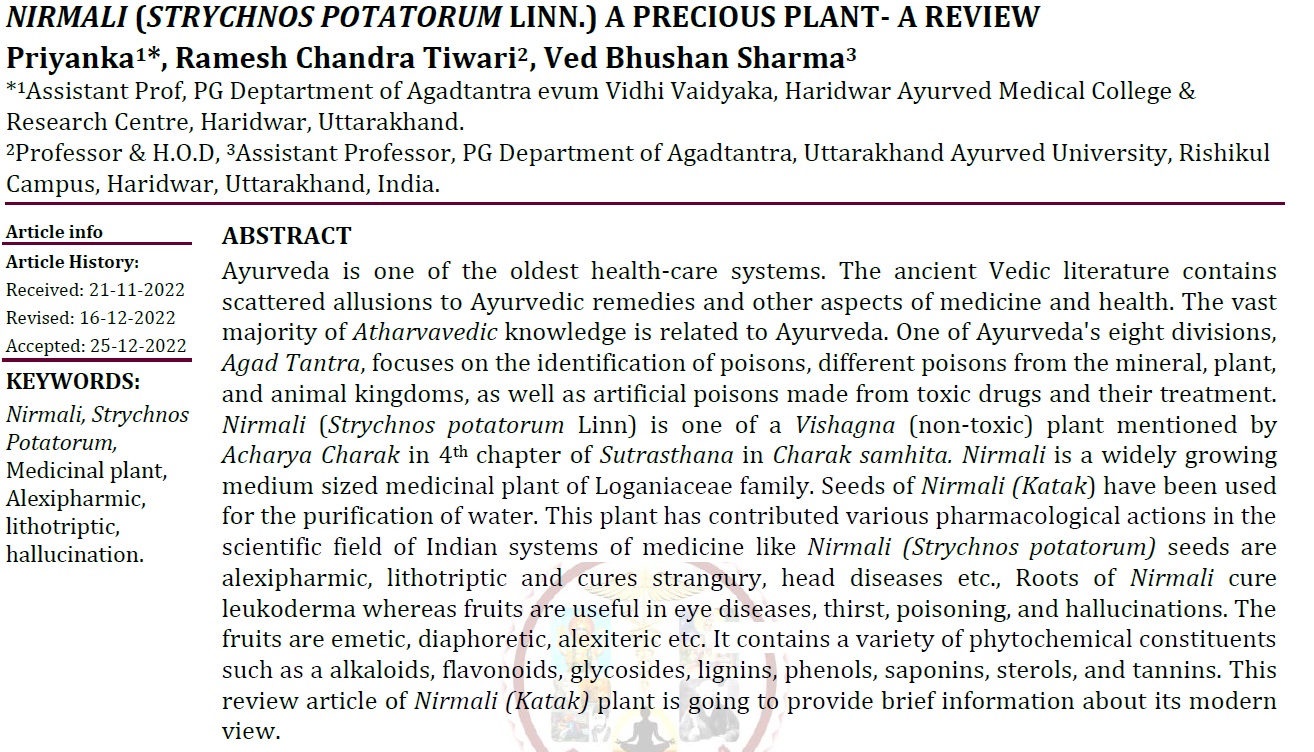Nirmali (Strychnos Potatorum linn.) A Precious Plant- A Review
DOI:
https://doi.org/10.47070/ayushdhara.v9i6.1118Keywords:
Nirmali, Strychnos Potatorum, Medicinal plant, Alexipharmic, lithotriptic, Hallucination.Abstract
Ayurveda is one of the oldest health-care systems. The ancient Vedic literature contains scattered allusions to Ayurvedic remedies and other aspects of medicine and health. The vast majority of Atharvavedic knowledge is related to Ayurveda. One of Ayurveda's eight divisions, Agad Tantra, focuses on the identification of poisons, different poisons from the mineral, plant, and animal kingdoms, as well as artificial poisons made from toxic drugs and their treatment. Nirmali (Strychnos potatorum Linn) is one of a Vishagna (non-toxic) plant mentioned by Acharya Charak in 4th chapter of Sutrasthana in Charak samhita. Nirmali is a widely growing medium sized medicinal plant of Loganiaceae family. Seeds of Nirmali (Katak) have been used for the purification of water. This plant has contributed various pharmacological actions in the scientific field of Indian systems of medicine like Nirmali (Strychnos potatorum) seeds are alexipharmic, lithotriptic and cures strangury, head diseases etc., Roots of Nirmali cure leukoderma whereas fruits are useful in eye diseases, thirst, poisoning, and hallucinations. The fruits are emetic, diaphoretic, alexiteric etc. It contains a variety of phytochemical constituents such as a alkaloids, flavonoids, glycosides, lignins, phenols, saponins, sterols, and tannins. This review article of Nirmali (Katak) plant is going to provide brief information about its modern view.
Downloads

Downloads
Published
Issue
Section
License
Copyright (c) 2022 AYUSHDHARA

This work is licensed under a Creative Commons Attribution-NonCommercial-ShareAlike 4.0 International License.


